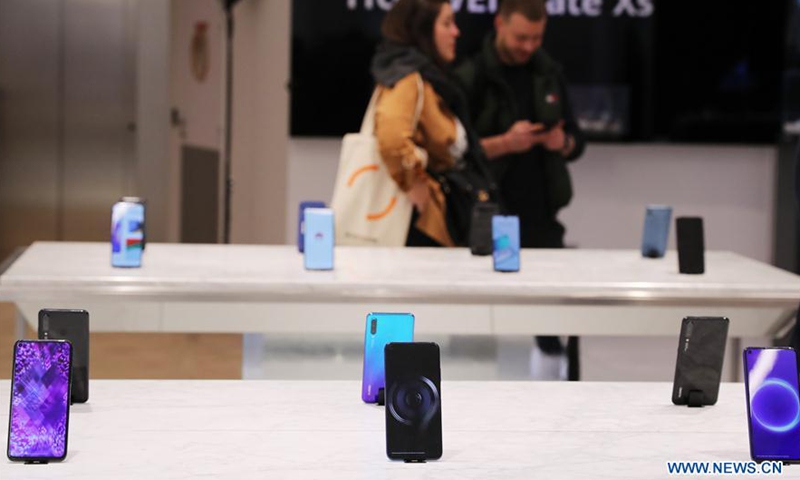Huawei ‘deepens’ ties with MediaTek, Qualcomm
By GT staff reporters Source: Global Times Published: 2020/8/4 18:58:41
Company orders more than 120 m chips from MediaTek amid US chip ban: reports

Customers visit Huawei's flagship store in Paris, France, March 5, 2020. Photo:Xinhua
Chinese telecommunications firm Huawei has reportedly signed a letter of intent for a large chip purchase order with Taiwan's MediaTek, a move showcasing it is adapting a strategy of unifying industry "competitors" and diversifying chip supplies amid a countdown to the US' toughened chip ban, said analysts.
According to media reports, Huawei has ordered more than 120 million chips from MediaTek. MediaTek said in a response that "it does not comment on information related to a single customer."
"I would say the report is 90 percent true," Ma Jihua, an industry analyst and a close follower of Huawei, told the Global Times Tuesday, noting that buying chips from its former competitor MediaTek is a forced but also a well-planned move to give the company breathing space over the US chip ban.
The US government put Huawei on an "Entity List" in May 2019 which required US firms to obtain a license to export domestically produced chips and software. On May 15 this year, Washington toughened the rules by requiring licenses for sales to Huawei of semiconductors made abroad with US technology, with a 120-day buffer time.
It is a win-win move, as Huawei's chip subsidiary HiSilicon may risk "finding nowhere to produce high-end chips," so the Chinese firm has to diversify its chip supplies. It happens that MediaTek's 5G chips are "not bad," a Huawei follower surnamed Jiang told the Global Times Tuesday.
On the other hand, MediaTek will also stand out among competitors with orders from such a big customer as Huawei, Jiang said.
If the deal is true and assuming that Huawei could ship about 180 million mobile phones this year, MediaTek's market share is more than two-thirds, far better than its US counterpart Qualcomm, media reports estimated.
The move also comes as Huawei has reached a deal with US chip firm Qualcomm to settle a patent dispute last week. Huawei will pay Qualcomm $1.8 billion for back royalties owed for 2019 and for the first six months of this year under the new global patent license agreement. The new deal also includes a cross license granting back rights to certain Huawei patents, covering sales beginning January 1, Qualcomm said.
"The series move also signifies Huawei is adapting its strategy amid the US' intensified crackdown, and it's trying to reduce industry opponents while seeking cooperation and deepened ties with more industry players to counter the US ban," Ma said.
Some industry analysts said the deal with Qualcomm may also pave the way for the US company to supply 5G semiconductors to Huawei in the future.
Nevertheless, Ma noted the reconciliation between Qualcomm and Huawei cannot be said to have direct benefits. After all, Huawei's problems are beyond the control of itself and Qualcomm as it is up to the Trump administration, Ma said.
"But an intertwined and deepened interest bond with a US firm will no doubt have positive influence on the policy trend," Ma said.
Industry analyst Jiang noted that this brings ties between the Chinese and US technology industries closer, which may create favorable conditions for higher-level negotiations and make so-called "decoupling" more difficult.
"Moreover, a development of 5G standards and its related industries also needs cooperation among Qualcomm, MediaTek and Huawei," Jiang said.
The Chinese firm has been moving against the headwinds over the past months. According to a report from TrendForce sent to the Global Times, Huawei is set to surpass Sweden's Ericsson to become the largest supplier in the mobile base station equipment market this year. Huawei is expected to occupy a global share of 28.5 percent, beating Ericsson by 2 percentage points.
For the first time ever, Huawei in the second quarter unseated Samsung to become the top smartphone vendor globally. According to Canalys, a technology research firm, Huawei took 19 percent of the global market share by shipping 55.8 million devices in the second quarter of 2020.
This came after Google cut its support for Huawei under the US rule, which was aimed at denting Huawei's overseas phone sales.
Posted in: INDUSTRIES